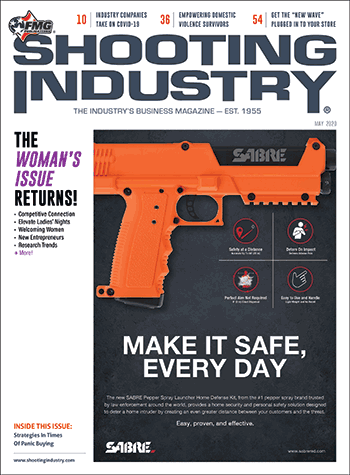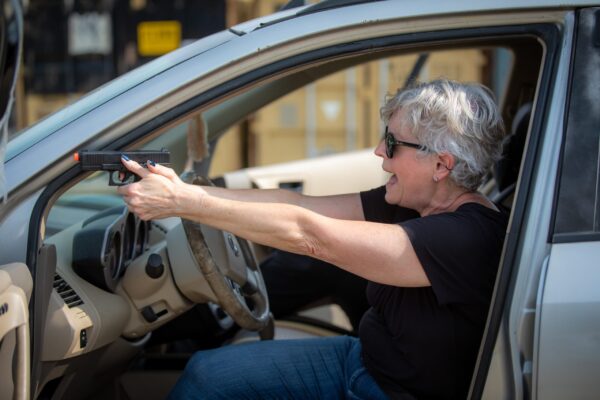Understanding Segments Of Future Female Gun Owners
There’s no doubt the profile of gun owners and shooting sports participants has changed over the years, and women have grown to represent an important portion of both these days.
According to the firearms consumer segmentation study conducted by Southwick Associates in conjunction with NSSF, women accounted for at least 30% of gun owners — and represented four out of every ten handgun owners.1,2 Additionally, the annual participation study by the National Sporting Goods Association (NSGA) on behalf of the NSSF estimated 8 million women participated in the shooting sports in 2018.3
However, as the industry recognizes the importance of women in the shooting sports, a crucial misconception may begin to rise. It’s easy to think of women as a distinct segment of one’s customer base, and to incorrectly assume all female customers share the same motivations and preferences. In reality, the reasons why women decide to get involved in the shooting sports are just as varied as they are for men. It’s essential to understand gender is just one of many factors that can define a customer segment. To illustrate this point, we will look at some findings from a recent study conducted by Southwick Associates on behalf of the NSSF.4
Millions Of Opportunities
This study, “Future Gun Owners of America; Improving Recruitment of New Hunters and Recreational Shooters,” focuses on people who do not currently own a firearm, but are very interested in purchasing one in the next few years. Findings suggest 24 million Americans are interested in buying their first firearm, and just over half of these potential firearm customers are women.
The study separated these 24 million future gun owners into segments defined based on each respondent’s rating of 17 different motivations for wanting to purchase a firearm, rather than by their demographic characteristics or how they planned to use their firearm.
Below are some highlights for four of the eight segments containing a high proportion of women:
Weaponless Wendy: 100% Female, 19% of Potential Firearm Buyers
An all-female segment, Weaponless Wendy is interested in protecting herself and her family, both at and away from home. She is almost exclusively interested in purchasing a handgun, but is concerned about affordability, safety and gaining better knowledge of how to use firearms. Imagery and messaging conveying skill, competence and being ready to protect help give Wendy a sense of confidence to purchase.
Unprepared Protector: 56% Female, 20% of Potential Firearm Buyers
Unlike Weaponless Wendy, the Unprepared Protector is interested in buying a firearm strictly for protection at home. The expense of a firearm is a concern, as is a lack of familiarity with firearms in general. More knowledge on firearms, a better understanding of licensing and regulations, as well as less expensive options might entice people in this segment to buy their first firearm.
Learner: 54% Female, 11% of Potential Firearm Buyers
The Learner’s main motivation for wanting to buy a firearm is to gain a better understanding of firearms. This group is also competitive, believing they would enjoy the challenge of learning to shoot and honing their skills as a marksman. Affordability and education have been barriers for the Learner, who feels the need to spend more time educating themselves about the purchasing process, what’s entailed with firearm ownership or any licensing/regulatory issues associated with owning a firearm. Messaging relating to self-improvement or challenges could help influence this segment to purchase.
Fun Fanatic: 52% Female, 11% of Potential Firearm Buyers
This segment is interested in purchasing a firearm because they think the shooting sports can be fun. They’re interested in recreational shooting, either with friends and family or alone, for the enjoyment of it. Many in this group have been target shooting before and are now looking to buy a firearm of their own. Barriers to purchasing relate to affordability and licensing/regulatory concerns, as well as being overwhelmed with options. Fun Fanatics can be encouraged to make their purchase by finding less expensive options, recommendations from friends and family and understanding where they could go shoot once they make their purchase.
Closer Look
The four consumer segments described above illustrate the wide variety of motivations encouraging women to participate in the shooting sports. Some, like Weaponless Wendy and the Unprepared Protector, are interested in firearms for protection purposes. Others, like the Learner, are driven by a desire for knowledge. Finally, there is the Fun Fanatic whose main interest in firearms is to use the shooting sports as a form of recreation.
By The Numbers
30% of U.S. gun owners are women
4 out of every 10 handgun owners are female
8 million women participated in the shooting sports in 2018
24 million Americans are interested in buying their first firearm (more than half are women)
Each of these motivations is equally valid and powerful, and it’s essential to recognize the factors motivating some female shooters may be of little concern to others, and the same is true for men. The takeaway from all of this is simple: Defining groups of customers based on their unique motivations is a much more insightful and useful strategy than simply assuming all female customers behave in roughly the same way.
At times, there are common needs or issues lying across all segments. This is certainly true when understanding why these 24 million Americans, women or men, have not yet purchased a firearm despite their high level of interest. It boils down to uncertainty: not understanding the process required to purchase a firearm; not enough experience or knowledge about safe use, storage and transportation of firearms; plus price options.
Safety First
A special note can be made about safety. Unlike current firearm owners who understand how to own and use a firearm safely, these potential new buyers, especially women, do not have that level of knowledge. They did not grow up around firearms, and don’t have someone close by to mentor them.
Overall, they appear less concerned about their own safety as they are about the safety of those around them. Will they do something foolish at the range? How can they store it safely with kids in the house and still be able to access it? What if the time comes when they need to defend themselves — will they be able to respond properly and maintain control of the situation? These are among the key points our customers need to know before visiting a dealer.
Considering the uncertainty and safety concerns in the minds of our potential new customers, they hesitate in taking the next step toward ownership. Therefore, it’s vital for retailers, manufacturers and the industry to collectively reach out to potential customers and help them understand the firearm options available, the purchasing process and most importantly, how they can safely own, use and store a firearm.
Nancy Bacon is Southwick Associates’ VP of business development, working on behalf of its private sector clients. Bacon has more than 25 years of experience researching the hunting and shooting market.
Footnotes:
1. Consumer Segmentation Analysis of the U.S. Commercial Firearms and Accessories Market. Southwick Associates and NSSF. 2017.
2. Handgun Consumers: An In-Depth Exploration Supplement to the Consumer Segmentation Analysis on the Firearms & Accessories Market. Southwick Associates and NSSF. 2017.
3. National Sporting Goods Association, Shooting Sports Participation, 2019 Edition.
4. Future Gun Owners of America; Improving Recruitment of New Hunters and Recreational Shooters. Southwick Associates, on behalf of NSSF. 2019.
Copies of this NSSF report, “Future Gun Owners of America,” are available at no cost by visiting www.nssf.org/research/r3. For consumer segmentation research customized to fit the needs of your company or niche, to gain access to detailed market reports or for custom research to help your business grow, contact Southwick Associates at Nancy@SouthwickAssociates.com







